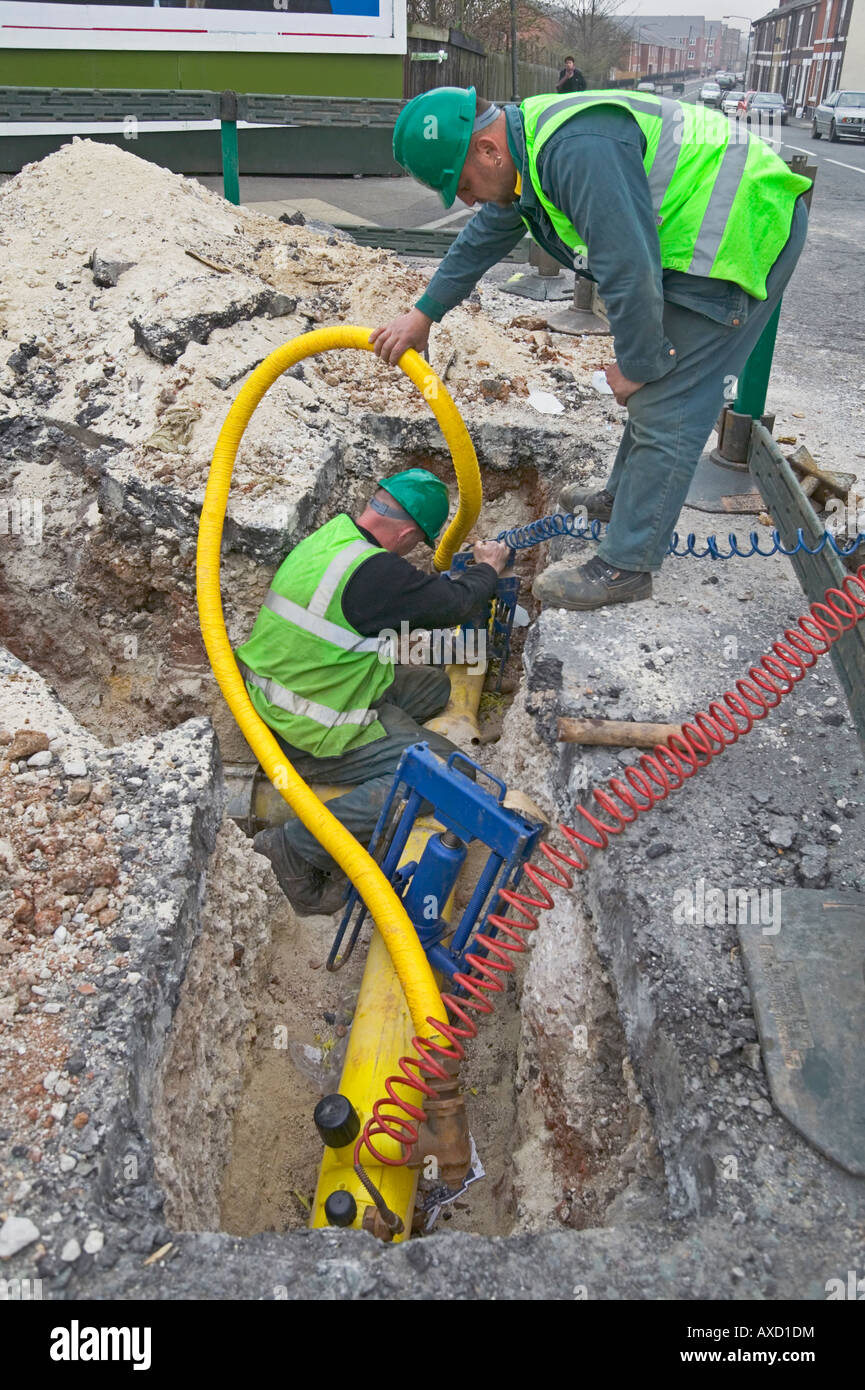Rehabilitating a city's natural gas supply by replacing deteriorating Victorian cast iron pipes with modern polyethylene tubing.

Image details
Contributor:
qaphotos.com / Alamy Stock PhotoImage ID:
AXD1DMFile size:
49.9 MB (2.3 MB Compressed download)Releases:
Model - no | Property - noDo I need a release?Dimensions:
3407 x 5120 px | 28.8 x 43.3 cm | 11.4 x 17.1 inches | 300dpiDate taken:
31 March 2004Location:
Midlands, UKMore information:
Much of Europe’s essential underground utility services like water, gas and sewage were fabricated from cast iron pipes, laid during the 19th and early 20th centuries. These pipelines have aged, corroded and fractured over many years and huge lengths of utilities are now in urgent need of rehabilitation or replacement. Excavating and replacing these pipelines with modern equivalents is a difficult and arduous task, particularly in busy city areas. Innovative techniques have been developed to make the process quicker, cheaper and less disruptive. Most common is the replacement of the original cast iron tubing with pipes made from polyethylene (PE). These pipes are made in long lengths (so need less jointing), are cheaper, lighter, stronger and more resistant to corrosion, temperature and bending. Often, the PE pipes are made slightly smaller in diameter than the original cast iron and are inserted inside by pushing or pulling – the lesser capacity of the smaller PE pipe is compensated by pumping the water at a higher pressure. The only continuing function of the original mains is to provide a protective conduit for the new polyethylene pipework. Polyethylene (PE) pipe manufacture is a multi-billion dollar industry. PE is currently the largest volume plastic in the world.